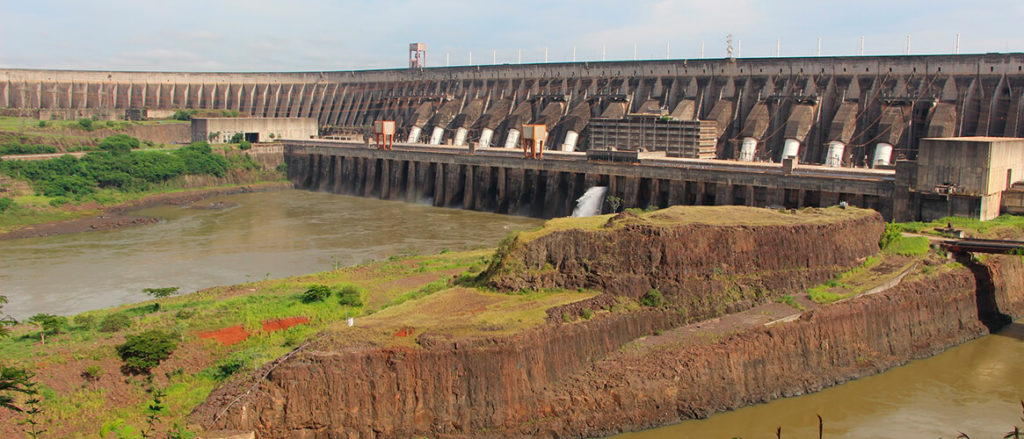Brazil keeps insisting on an antiquated model of development. We are still betting on an outdated system that prioritizes energy production through large hydroelectric dams and thermoelectric plants, and the export of agricultural and mineral commodities with little added value, rather than promoting technological innovation.
For many decades our cleaner energy grid based on biofuels and hydropower was an example to the world. However, what we have noticed over the past years is a decrease in our dams’ generation capacity. The extreme droughts observed during the rain cycles – resulting in a lower volume of water in reservoirs – and various administrations’ insistence on building thermal plants instead of expanding the use of renewable sources has caused great damage to the nation’s environment, health and economy.
And we expect this scenario to only get worse in a future that already seems to be upon us. In Brazil’s southeast, intense droughts in 2001 led to a country-wide blackout, and yet more historic droughts have been recorded in 2014 and 2015.
In the northeast, these extremes also appear to be more frequent and intense, with an unprecedented six year drought running from 2012 up to today, which has drastically reduced the storage and generational capacity of the gigantic Sobradinho dam. In a sense, one could say that the growing instability and unpredictability of the rains that supply the reservoirs is making hydropower considerably “intermittent,” that is, when the reservoirs almost dry up and power generation is reduced for an extended period of time.
In short, climatic extremes are increasing in intensity and frequency. What is the answer offered by hydroelectric dam engineers? Dams with gigantic reservoirs, growing bigger with each new proposal, exponentially increasing the financial cost and social and environmental impact in the regions where they are built.
If for years these dams have presented growing deficits in their energy production – and if this scenario is projected to get worse with climate change – why should we keep investing in this system? Who benefits from building such huge projects that don’t work as expected? The Operation Car Wash (an ongoing corruption investigation on the state oil company, Petrobras, that has revealed that executives accepted bribes in return for awarding contracts to construction firms at inflated prices) has helped answer these questions.
Recently, the press published articles about a “new decision” by the Brazilian government to no longer pursue a policy of building large dams in the Amazon. Despite the lack of an official statement on the issue, prioritizing investment in alternative sources, like solar and wind, is an important path for sustainable development in Brazil.
However, this must become a priority in the sector’s strategic planning, with a broad view of the steps needed to make this transition. An ambitious expansion plan for solar and wind power, with regulatory measures to stimulate local industry, would allow for a drastic reduction on the dependency on thermal plants.
Even with limited governmental support, the use of renewable energy has grown thanks to the drop in the implementation costs of wind and photovoltaic systems. The sector’s largest companies are investing in wind farms and solar centers. This investment is now also viable to consumers: the installation of solar modules at home has shown a growing rate of return in the market, surpassing 11% for residential consumers. We recently reached the symbolic milestone of 1 GW of photovoltaic solar energy, a very modest figure considering Brazil’s abundant potential for solar power.

In the United States, the renewable energy industry already employs more people than fossil fuels (Photo: Neo Mondo)
An oft repeated criticism of investing in renewable alternatives is the intermittent aspect of power generation, which depends on sunlight and wind. However, today’s hydroelectric dams, responsible for 70% of electricity production in Brazil, are already enough to compliment the energy produced by solar and wind, even in periods of reduced generation. There is a natural compensation with hydroelectric plants: during dry periods, there is a greater incidence of solar radiation and normally there are more intense winds.
Around the world, investment in this sector has resulted in a revolution for technological development and the creation of new jobs. In the United States, the renewable energy industry already employs more people than fossil fuels. Besides having a truly clean energy grid, investment in the sector can help the country become technologically competitive, in addition to helping with growth and the diversification of the national economy.
This movement favours distributed and decentralized generation, allowing the State to act more as regulator than producer. Furthermore, for the 1% of the Brazilian population still not connected to the grid and dependent on diesel generators (expensive, dirty and noisy), solar, wind and biomass alternatives within a decentralized system offer important ways to improve their quality of life.
In October, over 140 million Brazilians will go to the polls to choose a president, governors and legislators. It’s very important for society to be connected to each candidate’s proposals, demanding priority be given to public policies that make renewable energy alternatives viable.
We must place renewable energy in the center of the debate about Brazil’s economic development. We must leave behind the old model of megadams and thermoelectric plants. Seeking clean alternatives, cheaper and less damaging to the environment, is the inescapable trajectory of Brazil’s future.
Mauricio Voivodic is a Forestry Engineer and Master in Environmental Sciences from USP. He served as Executive Secretary of Imaflora and today is Executive Director of WWF-Brazil.
Carlos A. Nobre, retired climatologist from INPE, is a member of the Brazilian Academy of Sciences, a foreign member of the United States Academy of Sciences, and a Senior Fellow of WRI Brazil.
Published on 05/29/2018





